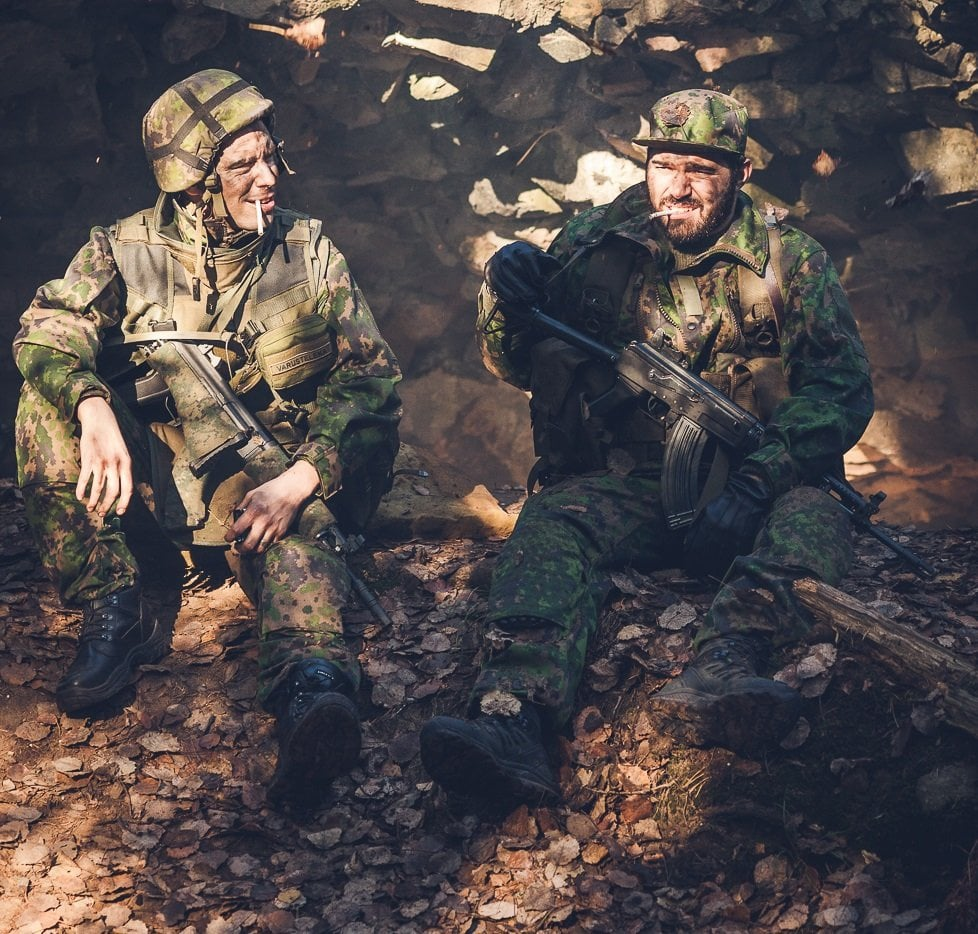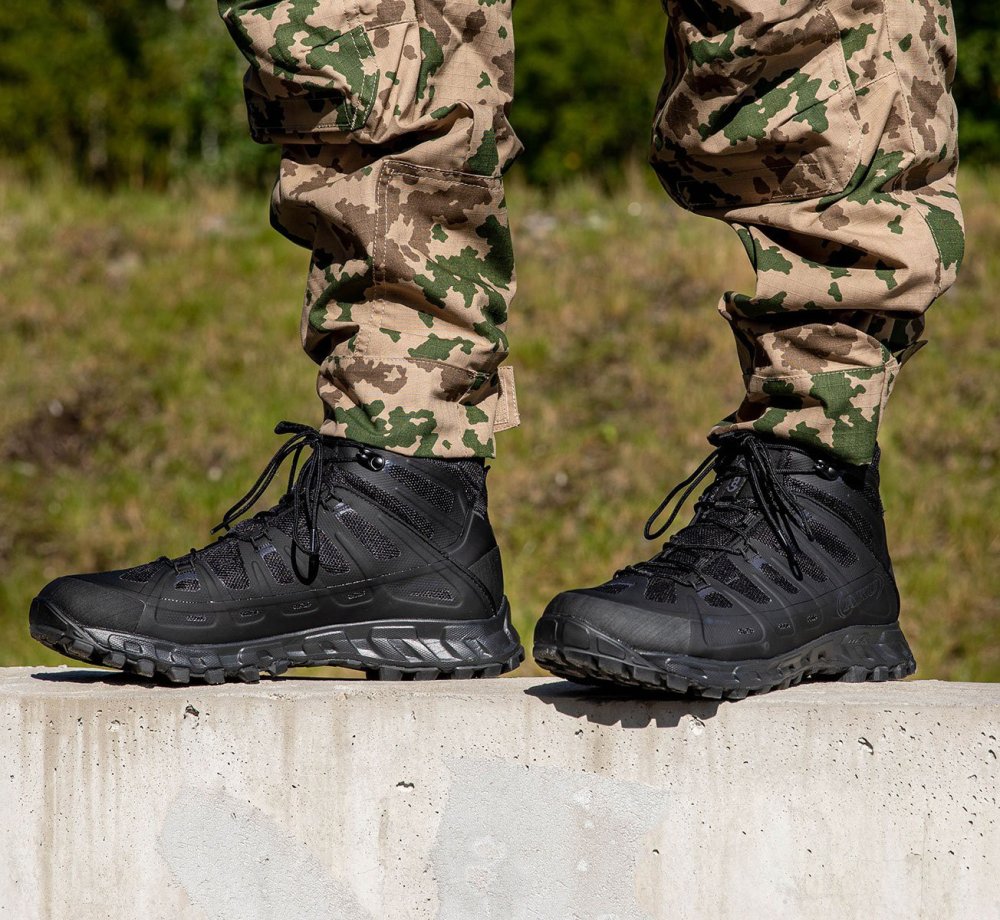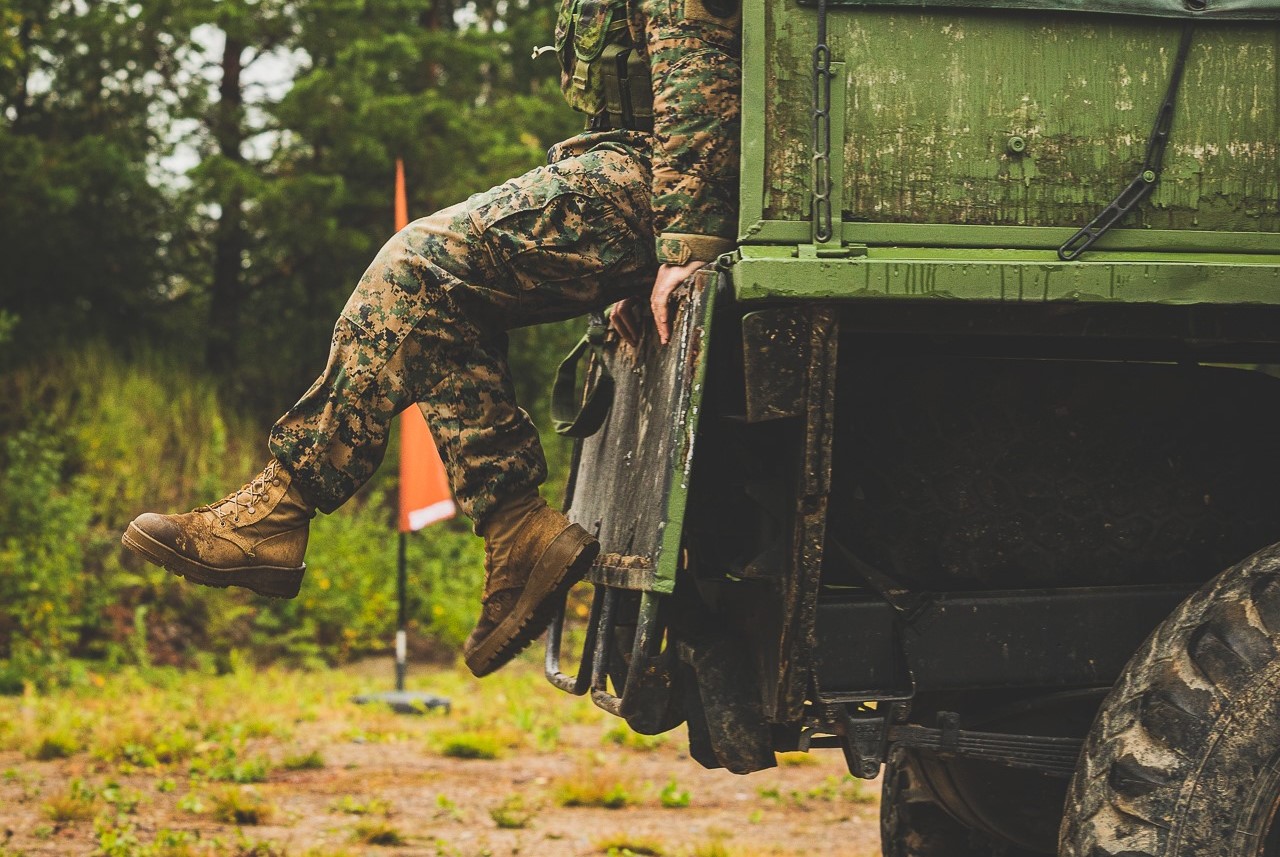Boots on the Ground – a Short Guide to Shoe Selection
Proper gear is a critical factor on the battlefield, and the significance of footwear is particularly crucial – if your feet aren't like a hobbit's, you may need to use footwear suitable for different seasons and terrains to be able to operate in field conditions. In this article, we will explore the footwear of the modern soldier, their characteristics, and suitability for various situations.
Footwear Then and Now
Before manufacturing and material technology became what it is today, footwear was made from various natural materials. Nowadays wood or reeds are rarely used, but a common material was (and still is) robust leather, which was then treated and saturated with products of corresponding eras. Footwear features were improved by using various accessories, such as gaiters, foot wraps, and others.
 These guys look like they may be packing also foot wraps along with their other motley gear.
These guys look like they may be packing also foot wraps along with their other motley gear.
Nowadays, footwear comes with insoles as a complete package and are mainly used just with suitable socks. Footwear has also become specialized: there are shoes for different terrains and seasons, optimized according to temperature, presence of water, and terrain features. In the Finnish Defence Forces, there are typically three types of footwear in field use: combat boots, summer rubber boots, and thicker winter rubber boots. For avid outdoor enthusiasts, smart reservists, and pros alike, it's also advisable to acquire multiple pairs of different footwear to get the most out of your performance and/or outdoor activities.
When the gear is in order, one can focus on the main thing – training and operating.
What Are Combat Boots?
Proper combat boots are typically sturdy footwear designed for field use. However, as there are countless types of missions, there are also shoes with various different features.
Boots With Membrane
Combat boots with a membrane are characterized by their waterproofing and breathability. Membrane boots are ideal for varying weather conditions – Gore-Tex and other membrane technologies allow moisture to escape from the shoes in most situations while preventing external water from penetrating inside. This makes them a versatile choice, especially for soldiers operating in diverse environments.
 However, remember that membrane boots also require care. If the outer material of a membrane boot gets completely wet, its breathability disappears. In this case, moisture evaporating from the foot does not escape from the boot despite the membrane. And if a membrane boot sucks in water from the top, then there is water in the boot, and it stays there.
However, remember that membrane boots also require care. If the outer material of a membrane boot gets completely wet, its breathability disappears. In this case, moisture evaporating from the foot does not escape from the boot despite the membrane. And if a membrane boot sucks in water from the top, then there is water in the boot, and it stays there.
Without Membrane
With proper and diligent treatment and maintenance, combat boots without membranes can also be relatively waterproof footwear.
Membraneless combat boot enthusiasts often emphasize durability and ventilation in their choice – there's no membrane to break. These boots are designed for lightweight construction and optimal air circulation, making them ideal for soldiers operating in dry conditions. Membraneless boots are often lighter than membraned options. With proper and diligent treatment and maintenance, membraneless boots can also be relatively waterproof footwear.
And besides, if you know you're going to soak your feet, shoes, socks, and your underwear anyway, a membrane does nothing good for you. This might be the case for individuals who perform swimming exercises with gear on. In some cases, shoes can also be taken off for crossing bodies of water.
Combat Boot Outer Materials
- Leather
- Breathes reasonably well and is waterproof with proper and continuous treatment even without a membrane
- Retains its sturdy shape in areas that don't bend and becomes flexible in necessary areas with use
- Requires proper breaking in, is often in a higher price range and heavier
- Dries slower than synthetic materials
- Synthetic
- Lighter and often more comfortable on the foot right out of the box
- In dry places, breathability is top-notch, especially without a membrane
- The material is often not as durable as leather
- Waterproofing depends on heavy DWR treatment and membranes
- Combination
- Combines the advantages of leather and synthetic
- Combines the disadvantages of leather and synthetic, i.e., a compromise
What are the best tactical boots?
There is a simple answer: the best boots are those that fit your role and mission – are you running around on uneven terrain with a heavy load, is it cold, is it dry; these are the questions you must be thinking about when choosing footwear.
Generally, leather is recommended for both dry and wet cold conditions – and in turn, breathable and lightweight synthetic materials are best suited for very hot conditions. If you have to go everywhere with one pair of shoes, it's worth considering the ankle support and cold tolerance of the shoe as the primary factor.
In addition to the main material, shoes often have various plastic reinforcements. For example, if you spend a lot of time on a shooting range getting up and down on rough concrete, the unprotected toe area of the shoe may quickly wear out or even break.
Low Shoes
Low shoes are a good choice for situations where lightness, quick movement, and comfort are needed. Low shoes are usually worn by specialized units, all sorts of security contractors, and indoor soldiers. With tactical sneakers that look like civilian shoes, you can also slightly reduce your militaristic appearance if necessary.
 AKU Selvatica Tactical GTX.
AKU Selvatica Tactical GTX.
If you are thinking about how to wear combat boots with jeans, see that the jeans have a good fit with your shoe selection. Normally you would opt to have pants that either blouse or are tightened over your boot shafts to avoid sand or other debris entering your boots. If this is not an issue, using low shoes might be the best and most low-key choice in combination with jeans or other civilian type pants.
Rubber Boots
Rubber boots are a classic choice for very wet conditions – at least in Finland. Their high shaft protects the feet from water and mud, and they are at their best when operating in swampy areas (most of Finland). The waterproofness of rubber boots is excellent, but their breathability is very limited compared to other options. When using rubber boots, sock selection and other accessories (felt liners, drying, etc.) are essential. There are also winter versions of rubber boots, which are the bees knees in heavily snow covered areas and stationary duties in arctic conditions.
 Winter rubber boots might be a good choice for stationary work in winter conditions.
Winter rubber boots might be a good choice for stationary work in winter conditions.
Winter Boots
Some combat boots are specifically designed as winter boots, intended for cold and snowy conditions, such as the Salomon Toundra. They combine insulation materials and, most often, waterproofing with a membrane, making them particularly effective in demanding tasks of northern winter (most of the year in Finland). Winter boots provide warmth and, being stiff and high-cut, support the ankle in uneven and treacherous snow and ice-covered terrains.
 Combat boots with an arctic twist.
Combat boots with an arctic twist.
Accessories and Maintenance
In addition to your shoe choice, remember to get suitable maintenance tools and products for your shoes – and maintain your shoes regularly. Your pair of shoes can also be customized with various insoles and shoelaces, if necessary. Another essential thing is to acquire proper socks suitable for both the shoe and the conditions. In this regard, we generally recommend merino wool socks. For very breathable but non-waterproof shoes, you can also get waterproof socks as a complement.
Summary & Where To Buy Military Boots
If you have to manage with one pair of shoes all year round, membraned combat boots with a season-appropriate sock choice is probably the most sensible option.
 AKU Selvatica Tactical Mid GTX.
AKU Selvatica Tactical Mid GTX.
A soldier's choice of footwear always depends on the requirements of the mission. Membraneless and highly breathable shoes are suitable especially for dry conditions, while rubber boots might be appropriate in watery terrains. For your own total footwear game, consider the terrain, weather conditions, and your mobility needs – each type of shoe has its own place and situation. If you have to manage with one pair of shoes all year round, membraned combat boots with a season-appropriate sock choice is probably the most sensible option.
You would be wise to make your footwear purchases at reputable businesses selling reputable brands, and always try the boots on first, as the sizing and shapes of shoes from different manufacturers may vary from one another. This article has links to specific types of shoes, but you can find our whole footwear collection here.
One more thing: When choosing a size in a particular shoe, take into account the thickness and type of the sock(s) you intend to use with the shoe.
